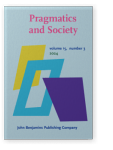Vol. 15:3 (2024) ► pp.448–470
Attacks and remedies in online public opinion reversal events
Collective attacks related to controversial issues are pervasive in online communication. However, public opinion is often reversed later when earlier reports are revealed to be misinformation, which may lead to remedies offered to the victim by netizens. We call such phenomena online public opinion reversal (POR) events, which reflect group polarization from attack to remedy. This paper explores the pragmatic strategies that netizens employ to launch attacks and offer remedies in such events, examining a dataset including 300 netizen-generated attacking comments and 300 remedial comments collected on Weibo. The study identified two main categories of online attack strategies and seven types of remedial strategies. Chinese netizens prefer to employ on-record strategies when launching attacks. When an earlier report is revealed to be fake, they employ apology as the most frequent remedial strategy. Preferences for different attacking and remedial strategies and potential influencing factors are also discussed.
Article outline
- 1.Introduction
- 2.Post-truth era and public opinion reversal events
- 2.1Impoliteness in online communication
- 2.2Apologies and remedies in online communication
- 3.The present study
- 3.1Background and data
- 3.2Data analysis
- 4.Online attacks in POR events
- 4.1On-record attack
- 4.1.1Attacking positive face
- Abusive expressions
- Negative comments
- Targeted attacks
- 4.1.2Attacking negative face
- Condescend/scorn/ridicule
- Threats
- 4.1.1Attacking positive face
- 4.2Off-record attack
- 4.2.1Sarcasm
- 4.2.2Supporting attack
- 4.2.3Implicated attack
- 4.1On-record attack
- 5.Online remedies in POR events
- 5.1Apology
- 5.2Emotional sentiment
- 5.3Workable solutions
- 5.4Blame the responsible party
- 5.5Promise of forbearance
- 5.6Subjective evaluation
- 5.7Explanation/account
- 6.Discussion
- 7.Conclusion
- Notes
-
References
